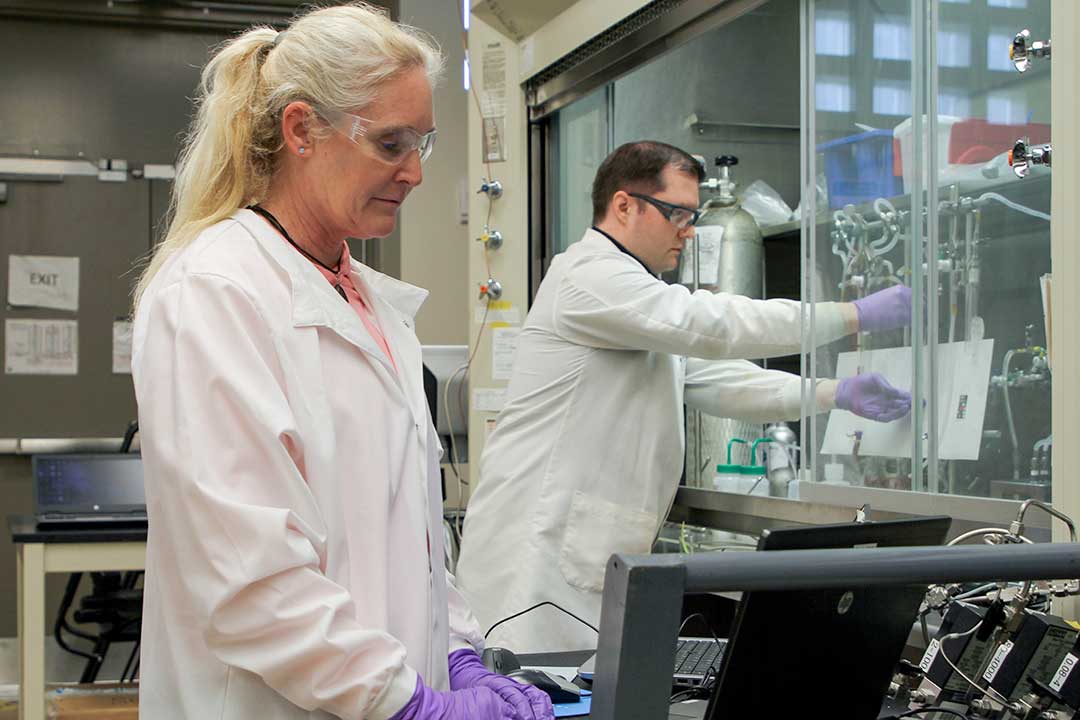Dr. Brian Hauck, a research chemist at the U.S. Army Combat Capabilities Development Command Chemical Biological Center (DEVCOM CBC), and his research team began with a question: What if you could 3D print a sensor that changes color in the presence of chemical warfare agents and toxic industrial chemicals?
Supported by $30,000 in seed money provided by the DEVCOM CBC through the Quick Empowerment leads to Successful Tomorrows (QUEST) program, the team began their research. Within the program, which funds projects ranging from 5,000 to 100,000 US dollars, Hauck’s team was able to present their idea and received the necessary funding to carry it out.
The main aim of the project was to modify commercially available filaments for fused deposition modeling, a common 3D printing process, so that they react to chemical influences like a pH test strip and change color. The research team developed a process in which a filament was immersed in a liquid indicator, then dried and exposed to various chemical vapors. After numerous experiments, it was found that white nylon soaked for 15 minutes and dried for four hours gave the best results.
The successful development of this technology now opens up further research opportunities, such as the integration of novel color-changing chemicals directly into the plastic material of the filament. The aim is to create a spool of color-changing filament that retains its sensory properties during the 3D printing process.
The research results have already piqued the interest of the Defense Logistics Agency (DLA), as this technology could significantly reduce the logistical burden of providing field sensors to soldiers. In the future, 3D printers and materials could be used near the front line to produce customized sensors in the shapes needed.
The team plans to submit the results of the ChROMa project to date to the DLA as part of the Emergent IV Broad Agency Announcement, a funding program for scientific studies and experiments designed to advance the current state of the art in additive manufacturing.
Subscribe to our Newsletter
3DPresso is a weekly newsletter that links to the most exciting global stories from the 3D printing and additive manufacturing industry.






















